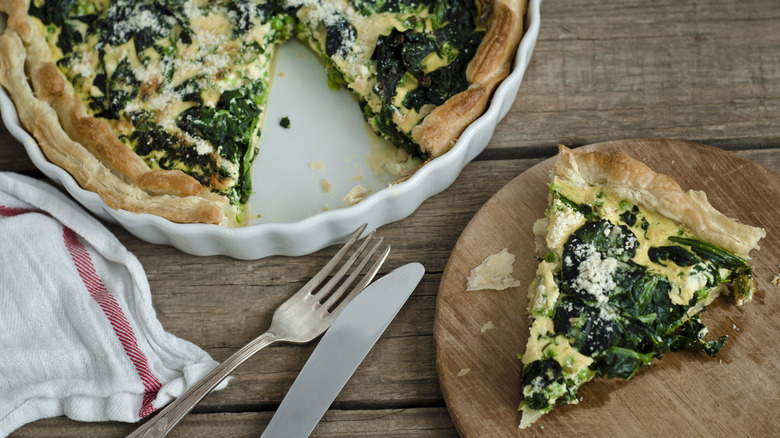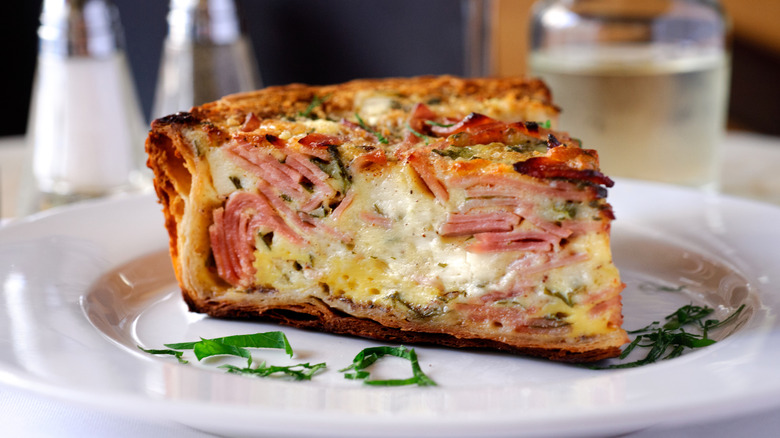Think Twice Before You Make Your Next Breakfast Quiche In A Pie Pan
Using a pie pan to make a breakfast quiche recipe may seem like a sensible choice, but according to an expert, it's a decision that likely won't deliver the result that you're hoping for. To discuss the ideal methods for preparing a delicious quiche, Food Republic consulted Scott Groth, chef at I'd Rather Be A Chef.
A frequent problem that many home cooks have when preparing this dish is a soggy base, caused by the pastry not fully baking. Using a pie pan exacerbates this issue due to its slanted edges, increasing the likelihood of overcooked edges and an undercooked base, as there's less room for heat to evenly circulate. Groth explained: "[If] the crust isn't blind baked (meaning some pie weights are added and the crust is baked before the filling is added) then what typically occurs is an undercooked, mushy crust... and nobody wants to eat that." So, if you want to enjoy a classic quiche Lorraine, maybe skip the pie pan.
Pie pans also tend to be shallow, which can result in a thinner quiche rather than the taller, more aesthetically pleasing versions typically found in bakeries. "Additionally, a traditional pie plate makes serving difficult[,] as the crust is typically stuck to the plate, leading to a messy appearance on the plate," Groth added. "When I make a quiche, I love it when the sides are perfectly sliced, showing off the beautiful ingredients inside." So, when it comes to aesthetics, a pie pan is far from the best choice.
What can you use instead of a pie pan?
When you are looking for a baking dish that better suits the requirements of your quiche, a removable base is a must. "With a quiche, I want the crust to heat quickly to facilitate browning," Scott Groth told Food Republic. In order to promote this type of cooking, the expert recommended a [tart] pan with a removable bottom, or a springform pan.
If you value the aesthetic look of your quiche, the springform pan is perfect: "This is mainly because it needs to be lined with parchment paper; the filling requires slightly more work than for a traditional quiche," according to Groth. The deep-set form of the pan calls for a longer cook time in order to achieve a quiche that is fully cooked through, but many bakers who appreciate the rustic (yet remarkably chic) look of a quiche neatly enwrapped in parchment will agree it is worth the extra effort.
For quick and even cooking, Groth recommended a tart pan. "My favorite is my metal [tart] pan, although there is slightly less filling in the quiche than with a pie plate," her shared. This style of pan cooks the entree quickly and evenly, and allows for easy slicing and serving thanks to the removable surrounding ring. If fast preparation is what you are looking for, this baking dish will provide optimal results for an evenly cooked, delicious quiche.


